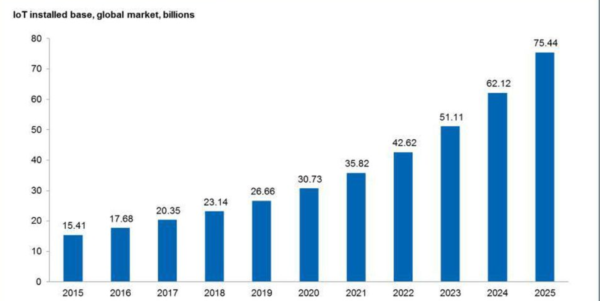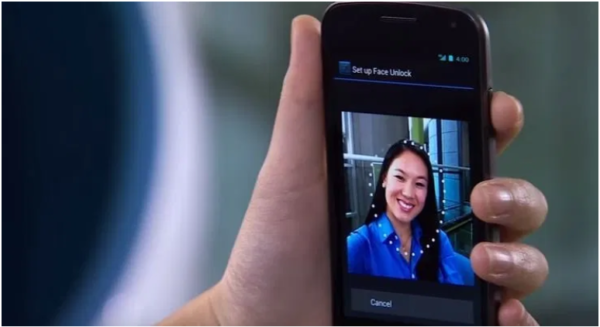Can you imagine your life without the internet? I bet you can’t!
The absence of the world wide web in today’s day and age would make it difficult for us to exist.
But, relax! That’s not going to happen.
The Internet is an intrinsic part of our lives and has been there for us and about us for years now. It has enabled us to share and receive information and also interact with each other. And just that has reshaped the dynamics of the world.
But as they say – The best is yet to come! That is pretty much the scenario here too.
We have been a generation of Internet of People that is now diving into the Internet of things.
Wait, what does that mean?
Internet of things will be where things share information and interact with each other.
Wikipedia says -The Internet of Things (IoT) is a system of interrelated computing devices, mechanical and digital machines, objects, animals or people that are provided with unique identifiers (UIDs) and the ability to transfer data over a network without requiring human-to-human or human-to-computer interaction.
So, basically, it connects the physical inanimate world around us with the digital world and makes our lives easier. Dr Judith Dayhoff puts it the best – IoT has given our inanimate world a digital nervous system.
The growing network of objects connected to the internet is able to collect data using embedded sensors. Thermostats, cars, lights, refrigerators, and more appliances can all be connected to the IoT platform.
Here are the examples to help you understand better –
Smart Home – This is the most popular example of IoT because it is affordable and available to consumers. What does a smart home look like? In a smart home, you can control all the appliances of your home from your smartphone. You can adjust the lights according to your liking through your smartphone. But wait, that doesn’t sound something extra-ordinary! You can adjust the lights even from a beach in Miami. Now, that’s a deal!
You can lock or unlock the doors of your house even from your office. Order your coffee maker to brew your coffee. And do much more. The most popular device of a smart home can be Amazon echo. It works through its voice assistant – Alexa. Users can tell Alexa to play music, provide a weather report, get sports scores, order an Uber, and more.
Smart wearables – Wearables have exploded the market since their arrival. They are installed with sensors and Softwares which collect data about the user. Your apple smartwatch for example. Do you think people invest in it just to keep track of time? Obviously not! They perform a variety of functions like making calls, sending texts, and even monitoring the health of the user. It can record the number of steps you walked throughout the day, the calories you burnt, senses when you’re asleep, and does so much more. You can then access this information through your smartphone and get an analysis of your sleep quality. That’s how your smartphone and smartwatch interact through the Internet of Things.
Here’s a quick example of an application of IoT in business –
En-Gauge is using the IoT to monitor and track safety equipment such as fire extinguishers, AEDs, and medical oxygen tanks. Sensors in the equipment are monitored to know whether or not the safety equipment are –
- placed in the correct locations.
- fully charged and ready to be used in an emergency.
There’s so much more that IoT can do, but that’s for another time.
So, how big is this Internet of Things?
IoT goes beyond your standard connecting devices – laptops and smartphones. It is speeding towards connected cars, smart homes, connected wearables, smart cities and connected healthcare. A Gartner report states- by 2020 connected devices across all technologies will reach to 20.6 billion. Amazed? Well, that’s our future.

IoT without Machine Learning
So, basically, IoT is connecting our lives by connecting the devices around us. But there’s a catch here. You need to manually operate these devices. You need to ask the devices to perform a particular action. Like in the examples we covered- You need to ask your coffee maker to brew your coffee after you wake up at suppose 8 a.m. You have to adjust the lights yourself through your smartphones.
So, that brings me to the point that IoT is smart but not intelligent.
And for IoT to become intelligent, it requires Machine Learning.
Machine Learning is nothing but an application of artificial intelligence (AI) that provides systems with the ability to automatically learn and improve from experience without being explicitly programmed.
Why Machine learning?
- Traditionally, data analysis uses historic data and expert opinion to establish a relationship between different variables. But with Machine Leaning, it directly starts with the resultant variables and then automatically looks for different predictor variables and their interactions. Hence, ML is really valuable when we know what we want but do not know the important input variables to come to that decision
- Machine learning accurately predicts future events. The algorithms keep improving over time as more data is assimilated.
With the convergence of IoT and Machine Learning –
1. The IoT devices will still perform their assigned actions but this time they’ll learn and understand your patterns and you’ll no longer have to instruct them to perform actions. Speaking of your day to day life, with machine learning, the devices will understand your behaviour, combine the necessary information from the internet, apply intelligence, and then perform their best actions. Different ML algorithms learn from data sets that are important in achieving that goal.
Going back to the smart home example, with ML and IoT –
The coffee will start brewing at whatever time you wake up. The lights will be adjusted to your preference at that time of the day. Your car will be warm when it knows you’re about to enter. Your thermostat will go on standby. The doors will be locked. All that without your instructions.
2. IoT produces humongous amounts of data but we need intelligent machines to make use of the unstructured data and derive meaning out of it. This data, if analysed efficiently can give rise to groundbreaking innovations in healthcare, businesses, agriculture, manufacturing, and all other industries of the world.
3. The multiple sensors present in or on machines can leverage ML algorithms and learn about the machine. It monitors the condition of equipment during normal operation to reduce the likelihood of failures. This predictive maintenance of ML is extremely useful in industries. Goldcorp, a mining company, is now using ML to make predictions with over 90 per cent accuracy about when maintenance is required, hence cutting costs considerably.
4. The top 5 Face Apps also leverage Machine learning

According to IDC, the most common use cases for machine learning and IoT data will be predictive maintenance, followed by analysing CCTV surveillance, smart home applications, in-store ‘contextualized marketing’ and intelligent transportation systems.
Concluding notes
The conversion of IoT is not a far-fetched idea that will affect the parallel universe. It is very much present with you and me. The future we are talking about is – here!
